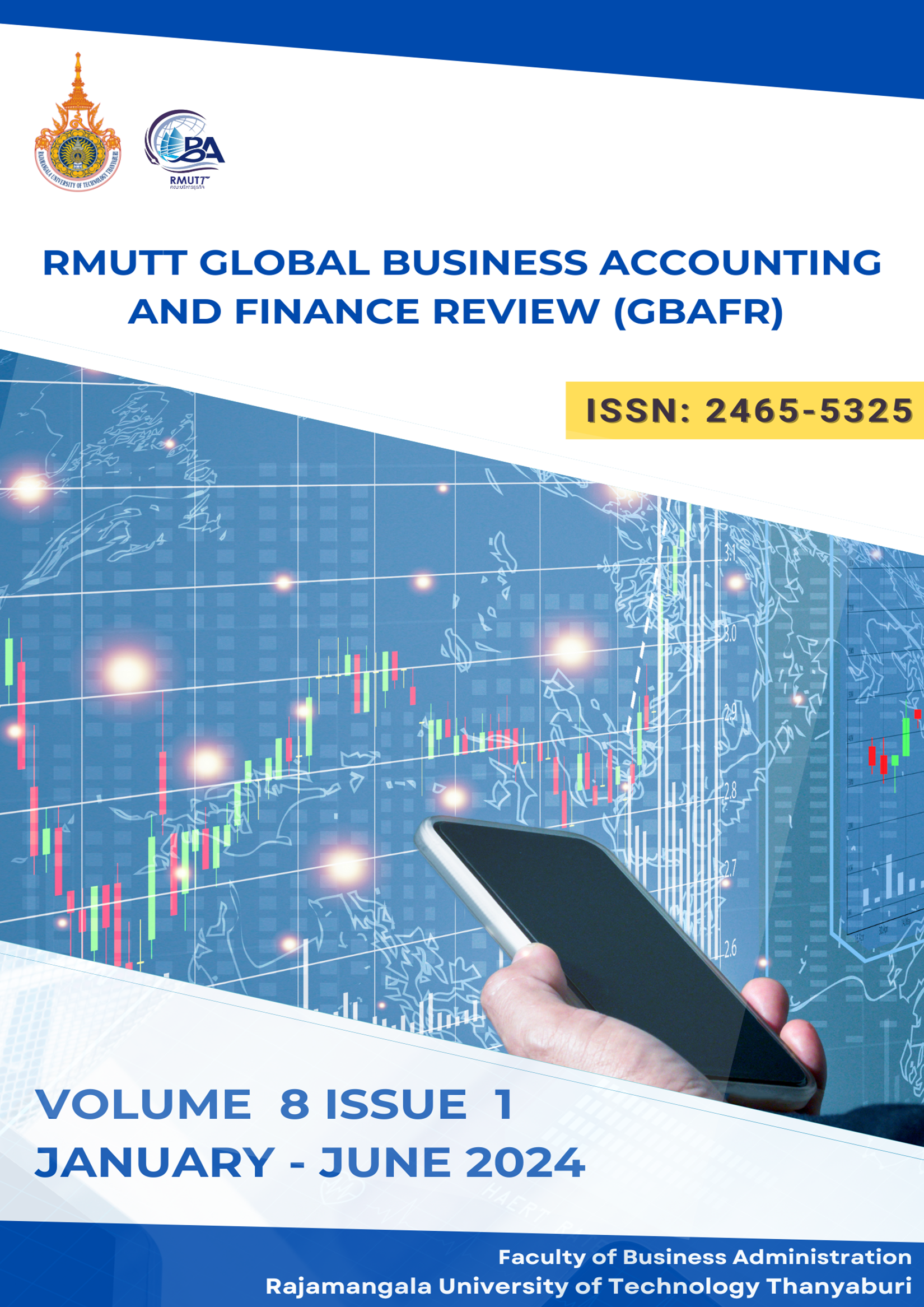ASSESSING THE ROLE OF AI-POWERED CHATBOTS IN IMPROVING CUSTOMER EXPERIENCE IN PHARMACEUTICAL E-COMMERCE BUSINESSES IN BEIJING
DOI:
https://doi.org/10.60101/gbafr.2024.271628Keywords:
AI-powered chatbots, Healthcare, E-commerce, Customer engagement, customer engagement, AI applicationAbstract
Purpose – The advent of new technologies like artificial intelligence in service industries has become a vital factor in creating a positive customer experience. The primary objective of organizations nowadays is developing excellent customer service that makes their customers satisfied, enhances their purchasing experience, and fosters engagement and loyalty. To achieve this, AI-enabled chatbots are widely used by businesses as they are more reliable, convenient, and accessible, provide quick resolutions as well as provide tailored recommendations for customers. This study examines the role of AI-powered chatbots in improving the customer experience in e-commerce pharmaceutical platforms in Beijing.
Methodology – This study will employ a qualitative secondary research method by examining existing information on online pharmacies using AI chatbots in Beijing.
Results – The findings reveal that there is huge potential for AI chatbots in online pharmacies because they can personalize customer interactions, streamline the healthcare journey of an individual, and cater to the growing demand for convenient and accessible healthcare services in an aging society like Beijing. In simple terms, healthcare treatment and diagnosis are time-consuming processes, however, with the incorporation of AI chatbots, customers gain access and convenience with personalized healthcare management, empowered self-service, 24*7 support, cost saving, eliminated hospital visits, retrieval of drug information and making them aware with proper education on medication and related services. The study indicates significant advancement in customer support and service quality within e-commerce pharmacies in Beijing. Integration of AI chat bots have shown capacities in providing personalized healthcare solutions, Real time information and also the emotional support to customers. These results together with the research objectives of assessing the impact of AI on customer satisfaction and service efficiency, as written in hypothesis 1 and hypothesis 2.
Implications – The study has identified both opportunities and Threats associated with AI chatbots. Hence, the successful integration of AI chatbots in online pharmacies to improve customer experience requires proper integration between regulatory compliance, ethics, and innovation.
Originality/Value – This research contributes to existing research by shredding valuable insights on the transformative potential of using AI chatbots in online business models.
References
Broersma, M. (2023, 22 August). Beijing bans ai-generated medical prescriptions. silicon UK tech. https://www.silicon.co.uk/e-innovation/artificial-intelligence/ai-beijing-healthcare-526123
Bu, L., Ching, V., Leung, N., Wang, W.K., Xia, B. & Xia, C. (2021). The Future of Digital Innovation in China. McKinsey & Company. https://www.mckinsey.com/~/media/mckinsey/featured%20insights/china/the%20future%20of%20digital%20innovation%20in%20china%20megatrends%20shaping%20one%20of%20the%20worlds%20fastest%20evolving%20digital%20ecosystems/future-of-digital-innovation-in-china.pdf
Cao, L. (2021, 30 April). JD’s chatbot lifesaving program selected as AI application exemple. JD Corporate Blog. https://jdcorporateblog.com/jds-chatbot-lifesaving-program-selected-as-ai-application-example/
Chen, C., & Liu, M. (2023). Achievements and Challenges of the Healthcare System in China. Cureus, 15(5), e39030. https://doi.org.10.7759/cureus.39030.
Chen, X. (2018). The current status and development countermeasures of online pharmacies in China. Open Journal of Social Sciences, 6(4), 224-231. https://doi.org/10.4236/jss.2018.64019
Chen, Z., Yu, J., Song, Y., & Chui, D. (2010). Aging Beijing: challenges and strategies of health care for the elderly. Ageing research reviews, 9, S2-S5. https://doi.org/10.1016/j.arr.2010.07.001
Dahiya, M. (2017). A tool of conversation: Chatbot. International journal of computer sciences and engineering, 5(5),158-161.
Divya, S., Indumathi, V., Ishwarya, S., Priyasankari, M., & Devi, S. K. (2018). A self-diagnosis medical chatbot using artificial intelligence. Journal of Web Development and Web Designing, 3(1),1-7.
El Bakkouri, B., Raki, S., & Belgnaoui, T. (2022). The Role of Chatbots in Enhancing Customer Experience: Literature Review. Procedia Computer Science, 203, 432-437. https://doi.org/10.1016/j.procs.2022.07.057
Fan, X., Chao, D., Zhang, Z., Wang, D., Li, X., & Tian, F. (2021). Utilization of self-diagnosis health chatbots in real-world settings: case study. Journal of medical Internet research, 23(1), e19928. https://doi.org/10.2196/19928
Farge, E. (2023, 20 January). China reports big jump in COVID hospitalizations – WHO. Reuters. https://www.reuters.com/world/china/china-reports-big-jump-covid-hospitalisations-who-2023-01-19/
Ferguson, F.-C., He, J., P’ng, J., & Kim, D. (2023, 29 August). China’s new rules for generative AI: An emerging regulatory framework. Lexology. https://www.lexology.com/library/detail.aspx?g=0105b285-17c6-4751-a10b-6836d144661a
Guillot, P., Shea, J., Shoemaker, S., Rocco, M., DeLuca, M., Rai, R., & Hermes-DeSantis, E. R. (2023). Medical Information Delivering Improved Customer Experience: A Guide. Pharmaceutical Medicine, 37(2), 111-119.
Hawkins, A. (2023, 24 September). Beijing’s demographic crisis means China could get old before it gets rich. The Guardian. https://www.theguardian.com/world/2023/sep/25/beijings-demographic-crisis-means-china-could-get-old-before-it-gets-rich
Huaxia (2022). Across China: AI chatbot provides mental-health support—Xinhua | English.news.cn. Xinhua.Net. http://www.xinhuanet.com/english/2021-07/16/c_1310064630.htm
Jenneboer, L., Herrando, C., & Constantinides, E. (2022). The impact of chatbots on customer loyalty: A systematic literature review. Journal of theoretical and applied electronic commerce research, 17(1), 212-229. https://doi.org/10.3390/jtaer17010011
Ketakee, N., & Champaneria, T. (2017). “Chatbots: An Overview Types, Architecture, Tools and Future Possibilities. International Journal for Scientific Research & Development, 5(7), 1019-1026.
Navarro, S. N. (2021). Health and Artificial Intelligence in the context of COVID-19 and beyond. UNIO–EU Law Journal, 7(1), 33-49.
Opoku, M. O., & Francis, E. K. (2019). Relevance of the technology acceptance model (TAM) in information management research: A review of selected empirical evidence. Research journal of business and management. 7(1), 34-44. http://doi.org/10.17261/Pressacademia.2020.1186
Panchal, H., Vagh, J., & Thumar, H. (2023). Consumer preference towards online retail pharma. International Research Journal of Modernization in Engineering Technology and Science, 5(2), 1667-1672. https://www.doi.org/10.56726/IRJMETS33787
Ramadhani, C. N. (2023). Chatbots in Pharmacy: A Boon or a Bane for Patient Care and Pharmacy Practice?. Sciences of Pharmacy, 2(3),1-23. https://doi.org/10.58920/sciphar02030001
Rane, M., Patra, S., Khan, U., Gutte, Y., & Shahabade, M. R. (2019). Medkwick–An e-commerce mobile application based on online medicine shopping. International Research Journal of Engineering and Technology, 6(4), 1875-1879.
Robles, P. (2016, 12 October). The doctor is always in/ Baidu to launch medical chatbot. Econsultancy. https://econsultancy.com/the-doctor-is-always-in-baidu-to-launch-medical-chatbot/
Seo China agency. (2023, February 14). 1. 68 billion mobile users in China 2023. Seo China agency. https://seoagencychina.com/1-3-billion-mobile-users-for-the-same-amount-of-inhabitants-in-china/
Singh, G. A. (2022). Chinese chatter: Covid crisis exposes Beijing’s crumbling healthcare infrastructure. India Today. https://www.indiatoday.in/coronavirus-outbreak/story/covid-exposes-beijings-crumbling-healthcare-infrastructure-2312419-2022-12-22
Statista (2023). Online Pharmacy - China | Statista Market Forecast. Statista. https://www.statista.com/outlook/hmo/digital-health/digital-treatment-care/digital-care-management/online-pharmacy/china
Taylor, H. (2016, 11 October). How China’s biggest search engine aims to fix a huge crisis in health care: A bot. CNBC. https://www.cnbc.com/2016/10/11/chinese-baidu-unveils-ai-health-chatbot-for-patients-and-doctors.html
Trenfield, S. J., Awad, A., McCoubrey, L. E., Elbadawi, M., Goyanes, A., Gaisford, S., & Basit, A. W. (2022). Advancing pharmacy and healthcare with virtual digital technologies. Advanced Drug Delivery Reviews, 182, 114098. https://doi.org/10.1016/j.addr.2021.114098
Wang, Y. (2023, 19 July). The future of industry marketing with jd. Com’s AI-powered solutions. JD Corporate Blog. https://jdcorporateblog.com/the-future-of-industry-marketing-with-jd-coms-ai-powered-solutions/
Waszyk-Nowaczyk, M., Guzenda, W., Kamasa, K., Pawlak, K., Bałtruszewicz, N., Artyszuk, K., ... & Merks, P. (2021). Cooperation Between Pharmacists and Physicians–Whether It Was Before and is It Still Ongoing During the Pandemic?. Journal of Multidisciplinary Healthcare, 14, 2101-2110. https://doi.org/10.2147/JMDH.S318480
Xu, L., Sanders, L., Li, K., & Chow, J. C. (2021). Chatbot for health care and oncology applications using artificial intelligence and machine learning: systematic review. JMIR cancer, 7(4), e27850. https://doi.org/10.2196/27850
Yahoo Finance (2023). JD Health International Inc. Company Profile & Facts. Yahoo Finance. https://finance.yahoo.com/quote/6618.HK/profile/
Yang, V. (2021). Opportunities for China’s Pharmaceutical E-Commerce Development. JD Corporate Blog. https://jdcorporateblog.com/report-shows-opportunities-for-chinas-pharmaceutical-e-commerce-development/
Yaofang (2023). Yaofang. Com—Crunchbase company profile & funding. Crunchbase. https://www.crunchbase.com/organization/yaofang-com
Yaofang. (n.d). Renhe Pharmacy Network. Regular online pharmacy, professional drug retail network. Yaofang.com. https://www.yaofang.cn/
Downloads
Published
How to Cite
Issue
Section
License
Copyright (c) 2024 Faculty of Business Administration, Rajamangala University of Technology Thanyaburi

This work is licensed under a Creative Commons Attribution-NonCommercial-NoDerivatives 4.0 International License.









